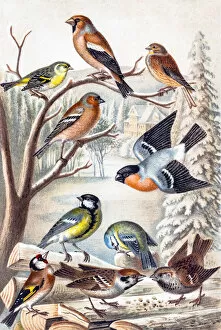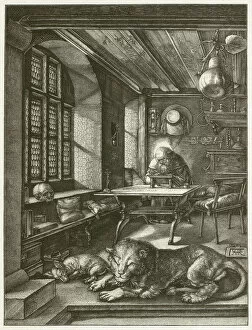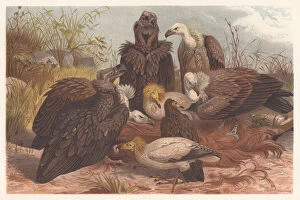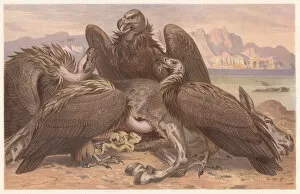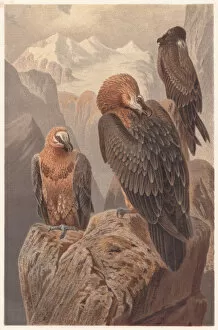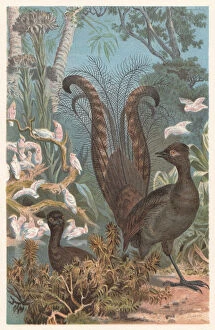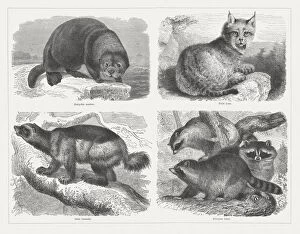Wilde Tiere Collection
Wilde Tiere
For sale as Licensed Images
Choose your image, Select your licence and Download the media
Wilde Tiere: A Journey Through Durer's Menagerie of Feathered Creatures and Predators (1878-1882) Embark on a captivating exploration of Albrecht Dürer's "Wilde Tiere" series, showcasing a diverse array of birds and predators that once graced Europe and beyond. This collection, published between 1878 and 1882, includes intricately detailed wood engravings and lithographs. Birds take flight: - Saint Jerome (1514), a wood engraving, presents a contemplative Saint Jerome amidst an idyllic landscape populated by various birds. - Southern European vultures, lithograph, showcases the majestic grace of these scavenging birds, with their powerful wings and keen eyes. - Crossbills (Loxia), lithograph, reveals the unique beaks of these finches, designed for extracting seeds from conifer cones. - African Paradise Flycatcher (Terpsiphone viridis), lithograph, displays the vibrant plumage and distinctive crest of this elusive bird. - Superb lyrebird (Menura novaehollandiae), lithograph, unveils the extraordinary mating calls and elaborate courtship dances of this Australian wonder. Predators on the prowl: - Predators, wood engravings, depict various fierce hunters, from the regal leopard to the cunning fox. Finches and more: - Finches (Fringillidae), lithograph, celebrates the beauty and diversity of these small, seed-eating birds. Join Dürer as he captures the essence of these wilde tiere, immortalizing their beauty and power for generations to come.

